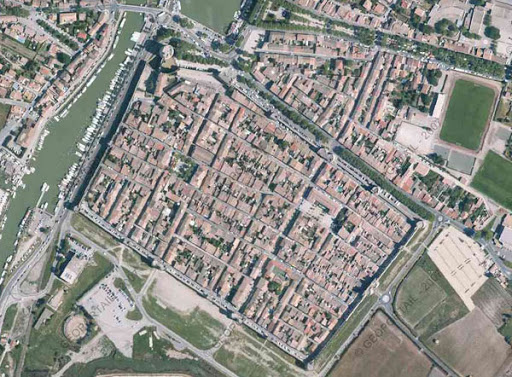Aigues-Mortes, located in the Occitanie administrative region of France, is a medieval bastide town. It was designed with a grid pattern inspired by a feature of the Roman system — a castrum. There are two principal roads, one running from the south to the north and one running from the east to the west, that intersect at a central square, borrowing from, as Busquets, Keller, and Yang note, the logic of a military camp. The grid pattern here can be read as closed and pre-capitalist in Marcuse’s sense: its medieval walls, which are preserved, place a physical limit on its extent. Today, because the medieval walls were preserved, the spatial pattern within the walls is discontinuous from the spatial pattern beyond it.
Aigues-Mortes, France
